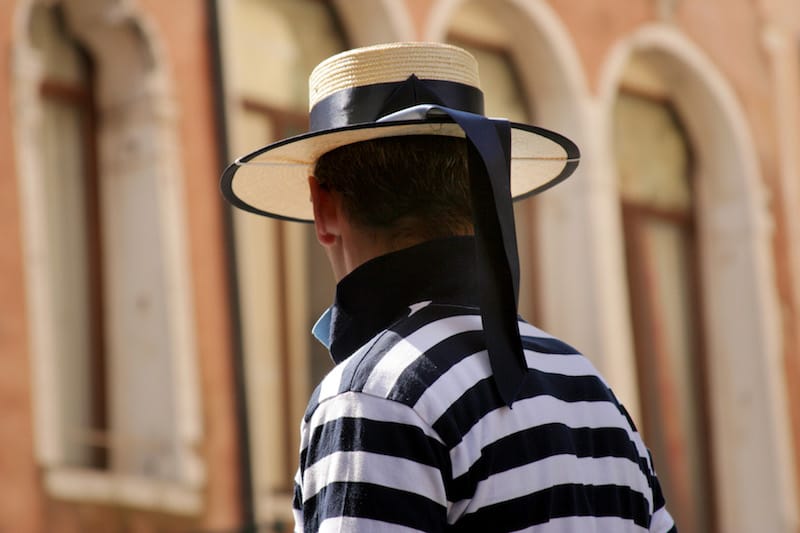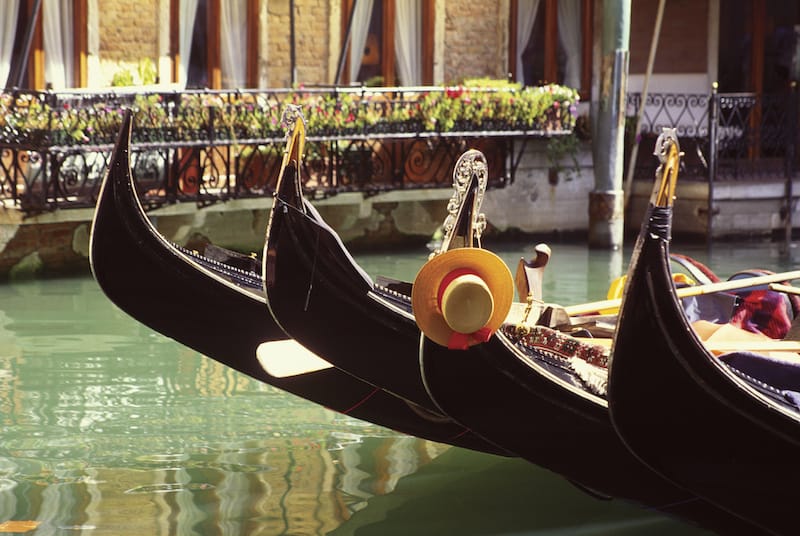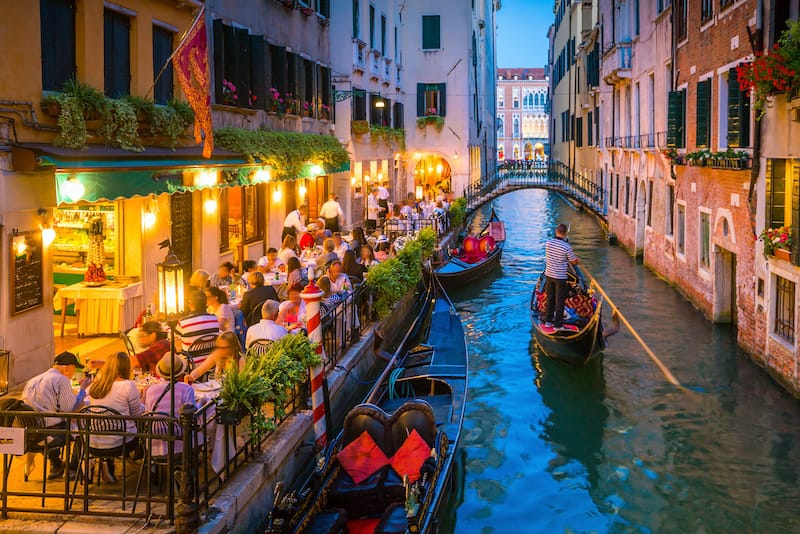
Long before you arrive in Venice on your Italy's Treasures getaway, you hold a postcard-perfect snapshot in your mind: the Floating City, crisscrossed with its captivating web of Old World canals. Zoom in and there you are, as an elegant gondola glides you gently past spectacular, jewel-toned palazzi dating to the 13th century.
Your gondolier: masterful

Maneuvering a 35.5’-long gondola through narrow canals is no small feat. Your gondolier trained for 400 hours over the course of six months, took on an apprenticeship, and passed a formidable exam to enter the gondoliere guild. And then, the guild grants only a handful of licenses each year. In the past, they were passed from father to son and on down for eons. Those days are gone.
Your gondola: a work of art

Built with a flat bottom to pass deftly over the shifting sandbars of the Laguna Venezia, your gondola is magnificent top to bottom, end to end. It took 500 hours over the course of 40 to 45 days for a master craftsman to meticulously construct from eight different types of wood: cherry, elm, fir, larch, lime, mahogany, oak and walnut. Every year, fewer and fewer artisans train in the centuries-old gondola-building techniques.
The hull of your gondola is a high-gloss black. Why? Prior to the 16th century, the wealthy, nobles and dignitaries took great pride in their private gondolas, each family competing to “out-sumptuous” the next with eye-popping colors and gaudy trappings. In 1633, sumptuary law (those are laws passed to restrain the sin of extravagance) declared that all gondolas must be black and gondoliers must dress in black. That iconic striped shirt of gondoliers like yours did not appear onboard until after World War II.
Your fellow watercraft: fascinating

As you pass by Venice’s squeri (boatyards) or beneath any of the city’s 400 photogenic bridges that span the waterways, note the hustle and bustle around you. In addition to gondolas, you may spy sandoli (the smaller, two-seater cousin to gondolas), vaporetti (water buses for local commuters), traghetti (ferries) and colorful topetta (classic wooden motor boats).
This unforgettable experience: endangered

During the 1500s, the Grand Canal and its arteries were teeming with gondolas — possibly as many as 10,000. By the late 1800s, only 4,000 or so remained, supplanted by steam-powered watercraft. Today, there are little more than 400 gondolas. So if you plan your trip to Venice just right and find yourself aboard one, count yourself lucky. Who knows how many more generations they’ll survive?
